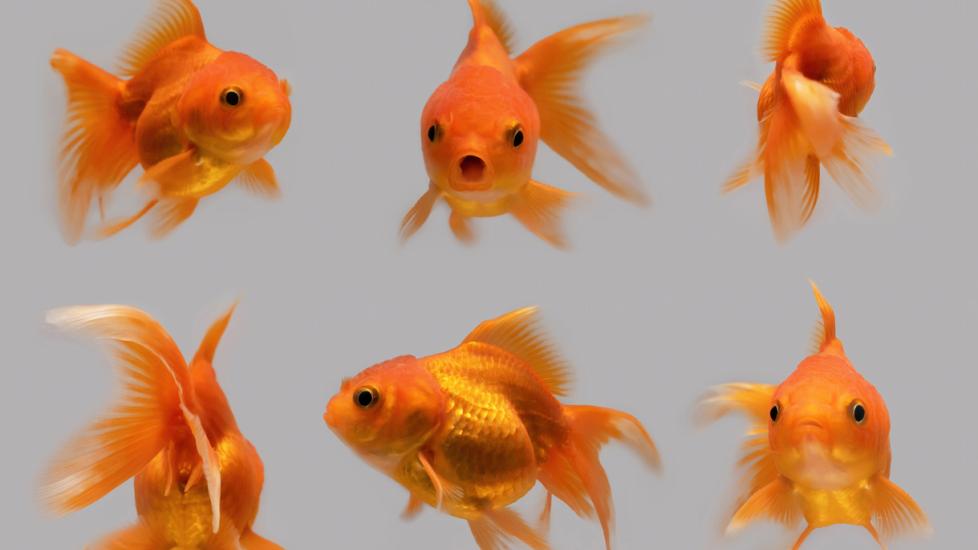How to Take Care of Goldfish
Goldfish (Carassius auratus) is the most commonly kept freshwater fish species across the globe. Goldfish originate from China during the Tang dynasty when a gold color mutation was observed in normal silver carp, then these gold individuals were selectively bred for generations. It wasn’t until the Song dynasty that other colors started to surface. Goldfish were first introduced to Europe as a good luck charm in the 1600s and then were introduced to north America in the 1800s.
After generations of breeding, there are over 200 breeds of goldfish. Most of the goldfish available to pet parents are in one of two categories: common or fancy. There are numerous colorations, patterns, body shapes, fin, eye, and tail types. Some goldfish can be elaborate and range in price–allowing for a goldfish type for everyone's interest.
Goldfish, when kept in excellent conditions, can live from anywhere between 10-15 years, sometimes even up to 20 years. Its common for goldfish to not reach their maximum life expectancy due to inadequate care. Keeping great care can extend the life of your pet goldfish.
Goldfish Tank
Temperature
Goldfish are considered a cold-water species of fish but can also be kept successfully at warmer temperatures. Fancy goldfish can be kept between 68-74 F, while some varieties such as comets or shubunkins can be kept in a wider range from 60-70 F. Often, goldfish can be kept at water temperatures that are similar to room temperature and do not require supplemental heat.
Water Quality
Good water quality is critical for keeping a goldfish healthy. The pH should range between 7-8.4 and temperatures should be kept in a narrow range. Water should be tested frequently and an aquarium should be cycled before adding any animals. Water quality test kits are available to test weekly when you have a freshwater fish tank.
Water aeration is vital to maintain oxygen levels within their habitat, which can be provided with an air pump and air stone. Filtration is also important to help remove any food items and feces from the environment. This will also keep the habitat clean for display.
Size and Enrichment
Goldfish should be kept in the largest possible habitat available. Habitat size should be dependent on the variety of goldfish and the full-grown size of the fish. A goldfish, depending on type, can be housed in a habitat that provides about 10-20 gallons of water per fish. Some of the larger varieties of fish require a larger amount of space. In some cases, goldfish of the varieties like orandas, ryukins, and moors should be kept outside in ponds.
Goldfish habitats can be enriched to make them more naturalistic with live plants, however its important to remember that goldfish may decide to eat some of the live plants since they are omnivores. Some plant species that grow fast and can outgrow a hungry goldfish are Vallisneria spp, Anubias, Java fern, and Cryptocoryne.
Substrate can be used for goldfish habitats to make the bottom of the enclosure look more realistic. Ensure the substrate is larger than what the fish can eat. Some starter kits are available that will help get you started with your aquarium.
An old misconception about goldfish is that they can thrive in small bowls. This is not true. Goldfish can survive some of the toughest environments and adapt quite well, but small enclosures such as bowls limit the ability of a goldfish to thrive in captivity. Often, goldfish are not provided adequate water quality, aeration, and an enriching environment in these habitats. These small habitats limit the animal’s ability for them to display their natural behaviors and move freely.
What to Feed a Goldfish
Goldfish are predominately omnivores. High-quality flake food or a sinking pellet made for goldfish can be used to feed your pet. The food should provide about 30% protein for a goldfish.
Pelleted food can last longer than flake food. Feeding flake food should be monitored as it often doesn’t sink. If a goldfish eats at the surface too much they can develop buoyancy issues. If pet parents choose to feed flake food, they should presoak it , since it’s more likely to sink to the middle or bottom of the water.
Additional dietary items that can be used as enrichment for goldfish include:
-
Live or frozen brine shrimp
-
Daphnia
-
Krill
-
Occasional vegetables like romaine lettuce
Adult goldfish can be fed up to once a day. Younger goldfish may need to be fed more often as they need to grow.
Goldfish can make vibrant, entertaining pets for any family and can live a long, healthy life when given the right environment. Their vibrant colors and personalities make them stand out from other pet fish species. Goldfish are a great beginner pet for anyone, even kids, and can be a rewarding companion for years to come.
Featured Image: iStock.com/tampatra
Help us make PetMD better
Was this article helpful?
